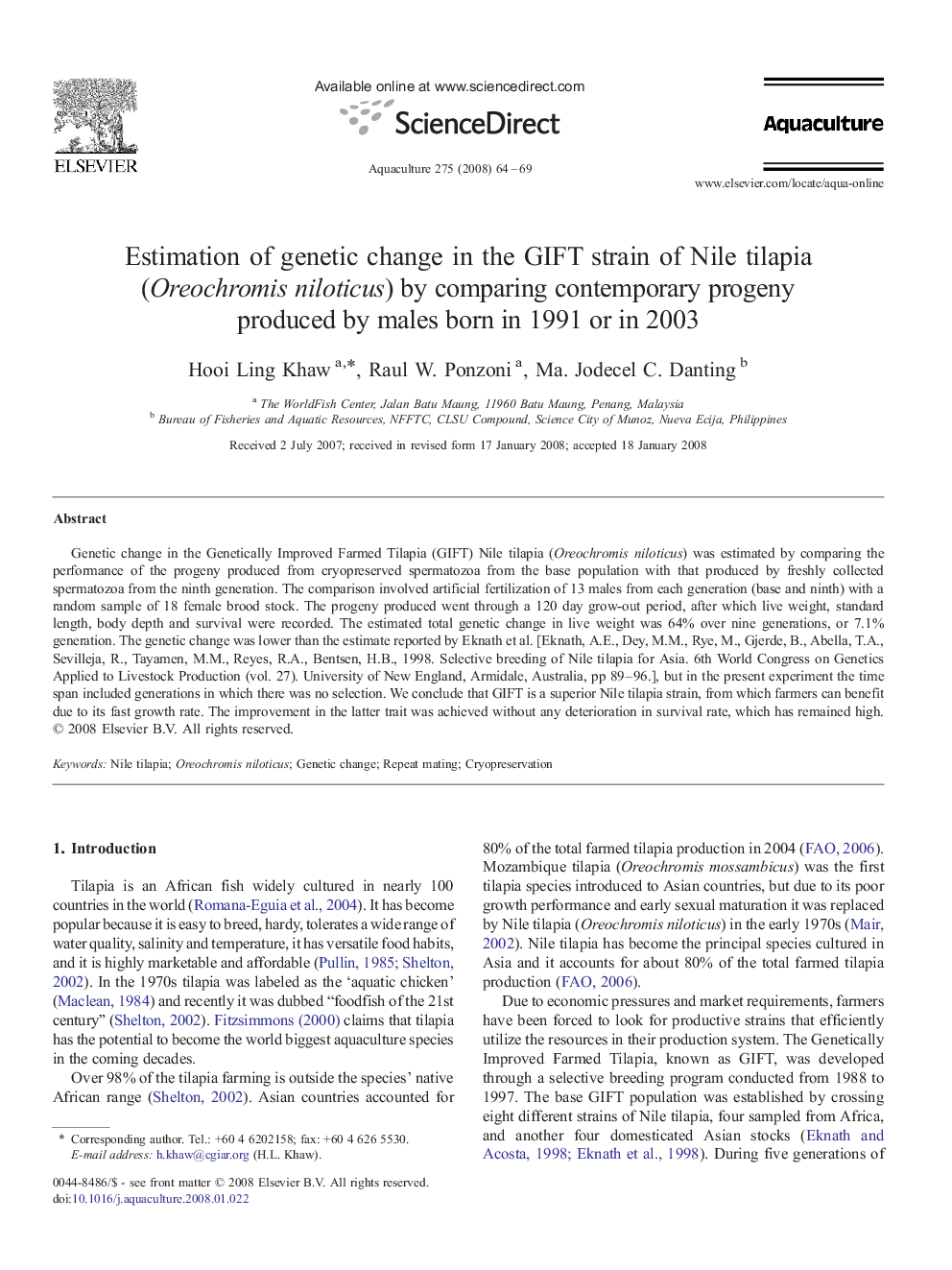| Article ID | Journal | Published Year | Pages | File Type |
|---|---|---|---|---|
| 2424842 | Aquaculture | 2008 | 6 Pages |
Genetic change in the Genetically Improved Farmed Tilapia (GIFT) Nile tilapia (Oreochromis niloticus) was estimated by comparing the performance of the progeny produced from cryopreserved spermatozoa from the base population with that produced by freshly collected spermatozoa from the ninth generation. The comparison involved artificial fertilization of 13 males from each generation (base and ninth) with a random sample of 18 female brood stock. The progeny produced went through a 120 day grow-out period, after which live weight, standard length, body depth and survival were recorded. The estimated total genetic change in live weight was 64% over nine generations, or 7.1% generation. The genetic change was lower than the estimate reported by Eknath et al. [Eknath, A.E., Dey, M.M., Rye, M., Gjerde, B., Abella, T.A., Sevilleja, R., Tayamen, M.M., Reyes, R.A., Bentsen, H.B., 1998. Selective breeding of Nile tilapia for Asia. 6th World Congress on Genetics Applied to Livestock Production (vol. 27). University of New England, Armidale, Australia, pp 89–96.], but in the present experiment the time span included generations in which there was no selection. We conclude that GIFT is a superior Nile tilapia strain, from which farmers can benefit due to its fast growth rate. The improvement in the latter trait was achieved without any deterioration in survival rate, which has remained high.
